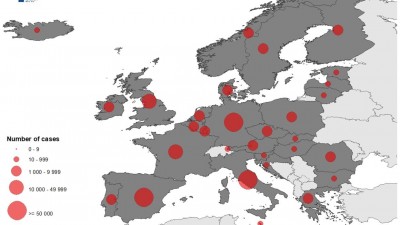All of those can bring your utility faster and higher-quality deployments. We’re the world’s main provider of enterprise open source solutions—including Linux, cloud, container, and Kubernetes. We deliver hardened solutions that make it easier for enterprises to work throughout platforms and environments, from the core datacenter to the network edge. By integrating Wiz with CaaS platforms, organizations can acquire deep insights into cloud safety dangers and actionable suggestions to mitigate threats.
Options
Atatus offers a set of performance measurement instruments to watch and improve the efficiency of your frontend, backends, logs and infrastructure functions in real-time. Our platform can capture tens of millions of performance information points out of your applications, allowing you to shortly resolve points and guarantee digital customer https://www.xcritical.com/ experiences. CaaS allows improvement groups to suppose when it comes to higher-order containers rather than coping with lower-level infrastructure administration.
In this part, we’ll evaluate CaaS to different cloud computing services, including IaaS, PaaS, and BaaS. They all have their professionals and cons that ought to be thought-about when deploying your project. DevOps containers are light-weight standalone executable packages that include every thing required to run an utility.
Platform
.jpeg)
Nonetheless, as a end result of CaaS operates on a different container technology-based virtualization model, it may be distinguished from PaaS and IaaS. CaaS is a strong modern hosting paradigm that may solely be used when you’re conversant in containers. CaaS could be tremendously advantageous to software program development Initial exchange offering groups which might be highly agile. It could be a huge assist when it comes to implementing steady deployment on a project. Most fashionable cloud hosting providers provide CaaS options at low pricing, so you gained’t should hunt far for a great CaaS.
- Containers allow applications to work and run as if they were constructed locally, eliminating environmental inconsistencies.
- For DevOps teams, CaaS streamlines workflows by integrating with automated CI/CD pipelines.
- Enhance your infrastructure’s availability, scalability and safety by exploring IBM’s load balancing choices.
- A robust partner will offer technical compatibility, a clear understanding of your vision and a dedication to open communication.
Book a demo and see the world’s most superior cybersecurity platform in action. IaaS supplies the infrastructure, but it’s up to you to maintain up your set up on that infrastructure. Increase annual income by 14% and minimize upkeep costs by up to 50% with focused app modernization strategies. Access the most recent analyst-led podcasts, tech articles, and industry sources as you connect with a few of the brightest minds in enterprise tech.
This kind of growth help is a major reason why more companies are choosing the CaaS mannequin. With a reliable companion ecosystem in place, they can scale with confidence and avoid the friction that always comes with rapid enlargement. When entering new regions, partners contribute native regulatory data and operational readiness. As transaction volumes grow, the right expertise partners ensure performance stays steady. This signifies that when new features are needed, roadmaps could be developed collaboratively, serving to convey stronger concepts to market quicker.
It’s used to automate app improvement, management, and scaling by grouping together containers running on Linux hosts into clusters and automating their management. It’s worth noting that Docker was the primary open supply software program tool to popularize building, deploying and managing containerized applications. Nonetheless, the Docker container platform lacked an automated “orchestration” tool, which made it time-consuming and complex for data-science groups to scale applications. Kubernetes, also referred to as K8s, was created to deal with these challenges by automating the administration of containerized purposes. Both Docker and Kubernetes are thought of industry requirements for containerized growth and deployment. Containers as a service (CaaS) offers a cloud-based platform where users can streamline container-based virtualization and container management processes.
A CaaS service’s principal resource is the container itself, whereas an IaaS service typically provides VMs or naked steel servers. Containers are essential for swiftly growing microservices purposes since utility parts are portable throughout cloud environments. Gone are the issues that come from having a number of environments with out-of-sync configurations.
.jpeg)
How Caas Works
Requirements around variety are community-focused somewhat than prescriptive. The new format, numbering system, and merged documentation make it easier to read and apply. When getting into new markets, strategic partners typically deliver local expertise, regulatory information, and operational readiness that would be difficult for issuers to construct alone. This is particularly priceless in areas with advanced or evolving financial regulations.
.jpeg)
This means, builders can focus on building purposes whereas the cloud supplier handles orchestration, scaling, and networking. In a CaaS surroundings, the supplier handles the underlying infrastructure, including the operating system, virtualization, and networking. This allows builders to give consideration to constructing and deploying purposes without worrying in regards to the complexities of container administration. Containers as a Service (CaaS) is a cloud computing model that permits developers to upload, build, scale, and manage containers.
.jpeg)
To start, let’s check out “containers as a service” by splitting up the time period into two key parts. Containers create constant environments to rapidly develop and deliver cloud-native applications that may run wherever. This can range from between systems, physical servers, virtual servers, Cloud, and so forth.
























Comments